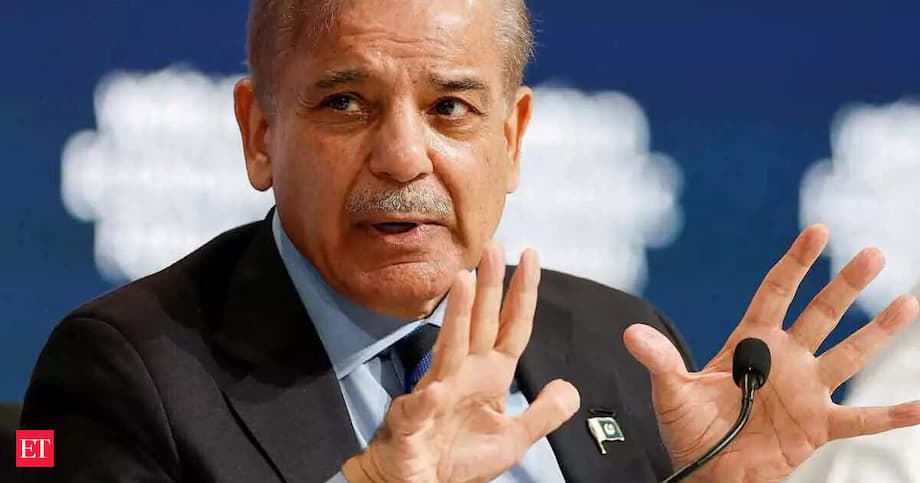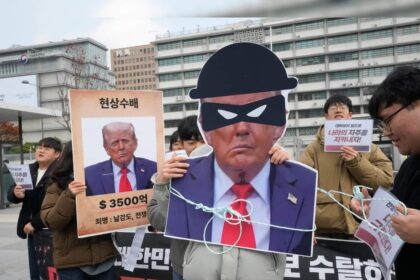Why the Indus Waters Treaty Dominated the Tianjin Summit
Pakistan’s Prime Minister Shehbaz Sharif used his appearance at the Shanghai Cooperation Organisation Council of Heads of State in Tianjin to spotlight a fragile but vital compact: the Indus Waters Treaty. He urged member states to respect international law and bilateral accords, arguing that uninterrupted access to water under existing agreements is essential for trust and stability in South and Central Asia. His remarks were a pointed response to India’s announcement that it would hold the treaty in abeyance following an April attack in Jammu and Kashmir’s Pahalgam that left 26 people dead. Pakistan has challenged the pause, and the Permanent Court of Arbitration in The Hague has since affirmed that a party cannot unilaterally suspend the treaty.
- Why the Indus Waters Treaty Dominated the Tianjin Summit
- What Shehbaz Sharif Asked for
- How India Framed the Moment
- The Treaty at the Heart of the Dispute
- Can a country suspend the treaty on its own
- Water security and climate stress in Pakistan
- Terrorism claims and the SCO response
- Afghanistan, connectivity and CPEC
- Diplomacy on the sidelines
- What happens next on the Indus dispute
- Key Points
The dispute over water arrived at the same summit where India pressed a hard line on terrorism. New Delhi’s position, echoed in the summit’s declaration, holds that terror and separatism threaten global peace and that there can be no double standards in confronting them. The SCO’s communal condemnation of the Pahalgam attack, alongside mentions of attacks in Pakistan, set a charged diplomatic context for Shehbaz’s appeal. Each side folded the water question into larger security narratives that have long defined India Pakistan ties.
Shehbaz paired his treaty argument with a broader pitch for dialogue. He cited Pakistan’s losses from terrorism and climate disasters, praised international support for relief during heavy floods at home, and extended his message to regional stability. He endorsed a peaceful Afghanistan, urged greater connectivity through projects like the China Pakistan Economic Corridor, and denounced violence in Gaza and strikes against Iran, another SCO member. The stage was multilateral, yet the water issue made the meeting feel starkly bilateral.
What Shehbaz Sharif Asked for
The prime minister framed three core requests. First, he asked SCO leaders to respect treaty commitments without interruption. Second, he called for a structured, comprehensive dialogue to resolve long standing disputes. Third, he urged collective work on shared challenges, from climate driven floods to cross border security threats, while keeping diplomacy at the center of regional engagement.
Respect for treaties and uninterrupted water access
In his address, Shehbaz tied the smooth functioning of the SCO to the principle that member states keep their legal commitments, especially where livelihoods rely on predictable flows. He described uninterrupted access to Pakistan’s due share of Indus basin water as a question of rights and stability, not a bargaining chip.
Introducing the point during the plenary, Pakistan’s prime minister said:
We expect SCO member countries to follow all bilateral treaties. Uninterrupted access to due share of water as per existing treaties among SCO members.
Pakistan argues that the Indus Waters Treaty is a binding compact that survived wars, which means it cannot be paused or reshaped unilaterally. By citing the ruling in The Hague, Islamabad sought to reinforce that position in a high visibility forum and to put the legal question beyond dispute.
Dialogue, not confrontation
Shehbaz presented negotiations as the only workable path. He urged what he called dialogue, diplomacy, and consultation, and linked this approach to Pakistan’s willingness to engage constructively with neighbors. The point was not new for Islamabad, yet the timing carried weight, given the emotion surrounding April’s attack and India’s emphasis on accountability for sponsors of terrorism.
How India Framed the Moment
New Delhi’s message in Tianjin focused on a common threat it says has long undermined peace. Prime Minister Narendra Modi told the plenary that rolling back terror in all its forms is a precondition for stability, and he pressed for stronger collective action against radicalization and terror financing.
Introducing India’s position at the session, Prime Minister Narendra Modi said:
Terrorism and separatism remain among the most serious threats to global peace.
India’s representatives have often linked cooperation with Pakistan to verifiable steps against groups they accuse Islamabad of tolerating. The SCO declaration offered political cover for this reading of events, with member states condemning the Pahalgam attack and calling for accountability. Against that backdrop, India’s move to hold the treaty in abeyance served as both signal and leverage, even as Islamabad insists that water law must sit outside the security dispute.
The Treaty at the Heart of the Dispute
Signed in 1960 with the World Bank as a broker and guarantor, the Indus Waters Treaty (IWT) is one of the world’s most durable water sharing agreements. It allocates the basin’s flows between India and Pakistan, sets technical parameters for projects, and creates a standing commission that meets regularly. The treaty’s resilience has often been cited as a rare constant in a volatile bilateral relationship.
How the treaty allocates rivers
The Indus system has six main rivers. Under the IWT, India has full rights over the eastern rivers, the Ravi, Beas, and Sutlej. Pakistan received rights over the western rivers, the Indus, Jhelum, and Chenab, which carry the larger volume of flow. India retained limited rights on the western rivers for irrigation, storage of small volumes, and hydropower generation using run of river designs that are meant to avoid altering flows in ways that would impair Pakistan’s use downstream.
Design and operation are governed by detailed rules, down to spillway gates and pondage, so that upstream facilities do not create the ability to manipulate releases in a manner that would harm irrigation cycles in Pakistan. That level of engineering specificity is why each new project often brings technical disputes that must be examined line by line by the two sides.
How disputes are handled
The Permanent Indus Commission serves as the treaty’s first stop for cooperation and complaints. When commissioners fail to settle a difference, the treaty provides two tracks. Technical questions can go to a neutral expert. More complex legal disputes can be referred to a Court of Arbitration, often seated with administrative support from the Permanent Court of Arbitration. Over the years, projects such as Kishanganga and Ratle have moved through these mechanisms, underscoring that the treaty anticipates friction and builds in ways to manage it without breaking the compact.
Can a country suspend the treaty on its own
India’s decision to hold the treaty in abeyance, meaning to pause its operation, posed a pointed legal question. The Indus pact contains no clause allowing a unilateral suspension for reasons outside the treaty’s own procedures. In The Hague, the Permanent Court of Arbitration made clear that India cannot unilaterally hold the treaty in abeyance. In legal terms, this affirms that a treaty of this kind continues to bind its parties unless both agree to change it or unless a breach is adjudicated through the treaty’s processes.
The ruling also reflects a practical reality. The IWT is not a simple memorandum. It is a detailed regime with institutions, design criteria, and dispute steps. Turning it off by a political announcement would set aside decades of engineering rules and oversight that protect both sides. That is why Pakistan has framed the abeyance declaration as incompatible with the rule based order the SCO says it supports.
Water security and climate stress in Pakistan
The Indus basin is Pakistan’s lifeline. It irrigates Punjab and Sindh, underpins food production, and supplies cities nationwide. For a largely agrarian economy, certainty over seasonal flows is not an abstraction. It determines planting and harvest routines, energy planning, and public health. That is why Pakistan’s leadership connects water to national security.
Climate stress makes the equation harder. Pakistan contributes less than one percent of global emissions, yet faces melting glaciers, erratic monsoon patterns, and extreme rainfall. The 2022 floods displaced millions, while more recent torrential rains and cloudbursts again overwhelmed districts along key rivers. Limited storage capacity gives planners little buffer, and silted reservoirs reduce the flexibility to spread shock across seasons. In Tianjin, Shehbaz thanked countries that supported relief and warned that inaction on climate will mean more loss of life and livelihood.
Terrorism claims and the SCO response
Security arguments carried into nearly every speech at the summit. Pakistan says it has lost tens of thousands of people and suffered heavy economic damage in its fight against militants. Shehbaz cited the Jaffar Express hijacking and pointed to what he called foreign involvement in attacks in Balochistan and Khyber Pakhtunkhwa. India highlighted Pahalgam, where 26 people were killed in April, and pressed the case that sponsors of terrorism cannot expect trust based arrangements to endure without change.
Before underscoring his treaty claims, the Pakistani leader tried to anchor his case in a broader rejection of violence. Introducing his point, the prime minister said Pakistan’s stance on extremism is categorical:
We condemn terrorism in all its forms and manifestations with the fullest force at our command.
SCO states collectively condemned the Pahalgam attack in their declaration. That statement aligned with India’s call for strong accountability and made clear that public opinion among major Eurasian powers has moved toward a single message on counterterrorism. Pakistan, in turn, sought to ensure that this consensus did not squeeze its legal position on water.
Afghanistan, connectivity and CPEC
Shehbaz linked peace to connectivity. A stable Afghanistan, he argued, would unlock trade corridors that benefit the entire SCO. He encouraged deeper economic integration, positioning the China Pakistan Economic Corridor as a working example of cross border infrastructure that could be widened or replicated. The idea is to move from a security first conversation to one where roads, energy, and ports bind economies together.
He also voiced support for broader Chinese initiatives and welcomed the Tianjin Declaration. The tone was consistent with Pakistan’s long standing view that prosperity grows from regional ties, even when political tensions run high. In that sense, connectivity becomes part of a risk management strategy, not just a development plan.
Diplomacy on the sidelines
Shehbaz held meetings on the margins of the summit, including with Iranian President Masoud Pezeshkian. The conversations explored trade, energy links, and potential projects that could fit within the next phase of CPEC. Pakistani officials also engaged Chinese provincial and municipal leaders, including a delegation from Tianjin Binhai New Area, to discuss investment opportunities and industrial cooperation.
What happens next on the Indus dispute
In the near term, the Permanent Indus Commission remains the forum for technical and operational issues. If the sides cannot agree there, the treaty already sets out how to escalate to a neutral expert or to arbitration. India’s pause is not recognized by the treaty’s mechanisms, and the ruling in The Hague underlines that point. That legal reality steers both capitals back to the text and to the commission table, where most disputes historically begin and often end.
Politics will still shape the pace. Indian leaders face strong pressures to link cooperation to credible action against militants. Pakistani leaders face water scarcity at home and a public wary of any concession that reduces flows or creates new leverage upstream. The SCO gave both sides a stage to speak to those audiences. It did not resolve the water question, but it did clarify that law, not unilateral announcements, will decide how the Indus flows are managed.
Key Points
- At the SCO summit in Tianjin, Pakistan’s Prime Minister Shehbaz Sharif called for respect for treaties and highlighted uninterrupted access to water as essential for regional stability.
- India announced it would hold the Indus Waters Treaty in abeyance after an April attack in Pahalgam that killed 26 people.
- The Permanent Court of Arbitration in The Hague has ruled that India cannot unilaterally suspend or hold the treaty in abeyance.
- Shehbaz urged structured dialogue to resolve disputes and framed diplomacy as the only workable path forward.
- India focused on a hard line against terrorism, and the SCO declaration condemned the Pahalgam attack and called for accountability.
- The Indus Waters Treaty, signed in 1960 with World Bank support, allocates the eastern rivers to India and the western rivers to Pakistan, with detailed rules for upstream projects.
- Disputes under the treaty are managed through the Permanent Indus Commission, with escalation to a neutral expert or to arbitration if needed.
- Shehbaz tied Pakistan’s water concerns to climate stress and recent floods, thanking partners for aid and urging stronger cooperation.
- He supported a peaceful Afghanistan, promoted expanded regional connectivity through CPEC, and condemned violence in Gaza and strikes against Iran.
- Meetings with Iran’s president and Chinese local leaders explored trade and investment, while the water dispute returns to treaty channels for any next steps.












